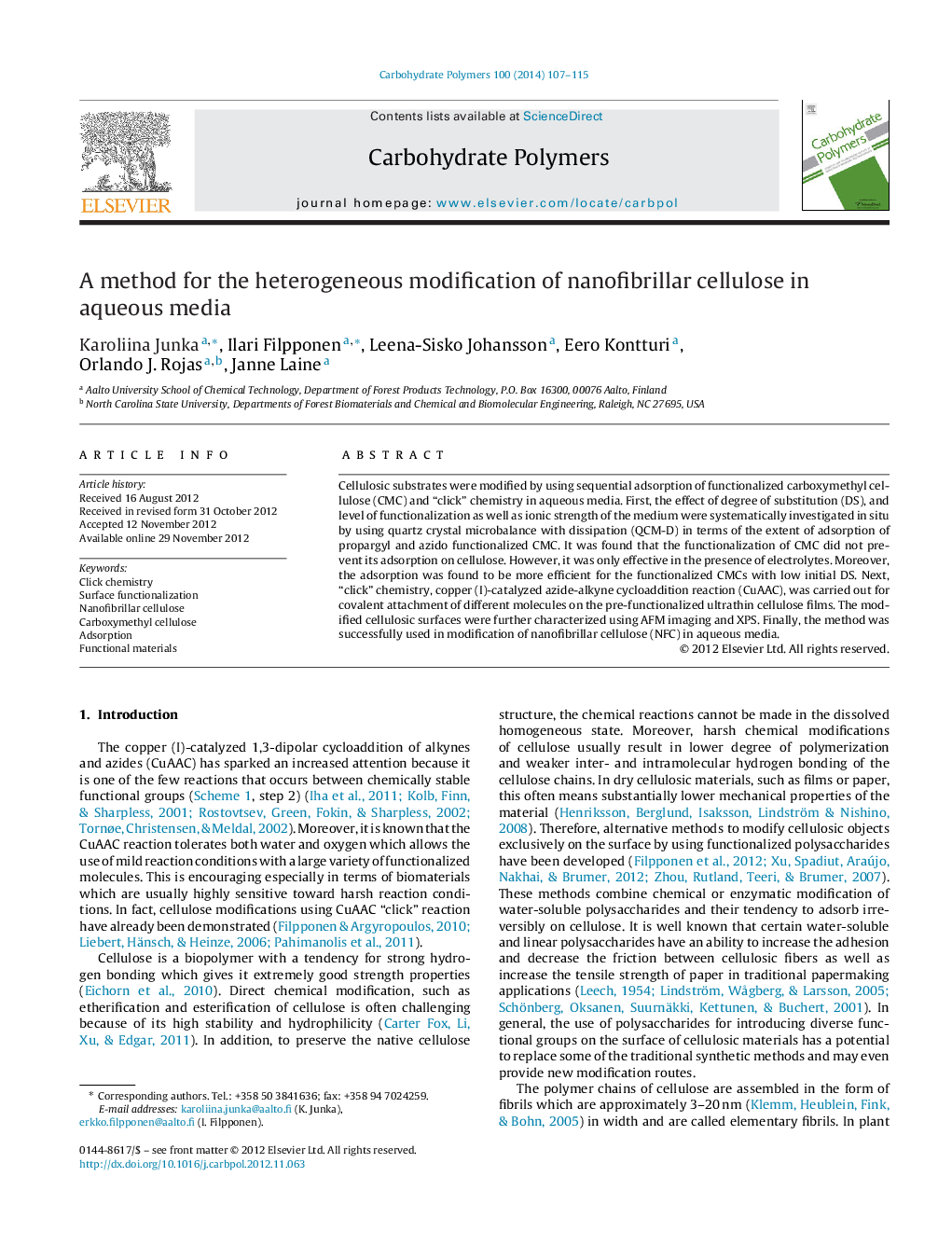| Article ID | Journal | Published Year | Pages | File Type |
|---|---|---|---|---|
| 1376097 | Carbohydrate Polymers | 2014 | 9 Pages |
Cellulosic substrates were modified by using sequential adsorption of functionalized carboxymethyl cellulose (CMC) and “click” chemistry in aqueous media. First, the effect of degree of substitution (DS), and level of functionalization as well as ionic strength of the medium were systematically investigated in situ by using quartz crystal microbalance with dissipation (QCM-D) in terms of the extent of adsorption of propargyl and azido functionalized CMC. It was found that the functionalization of CMC did not prevent its adsorption on cellulose. However, it was only effective in the presence of electrolytes. Moreover, the adsorption was found to be more efficient for the functionalized CMCs with low initial DS. Next, “click” chemistry, copper (I)-catalyzed azide-alkyne cycloaddition reaction (CuAAC), was carried out for covalent attachment of different molecules on the pre-functionalized ultrathin cellulose films. The modified cellulosic surfaces were further characterized using AFM imaging and XPS. Finally, the method was successfully used in modification of nanofibrillar cellulose (NFC) in aqueous media.
► Propargyl- and azido-functionalized carboxymethyl celluloses (CMC) were synthesized. ► NFC was modified by sequential polysaccharide adsorption and “click” chemistry. ► The adsorption of functionalized CMC on cellulose was studied using QCM-D. ► The functionalized CMCs adsorb irreversibly on cellulose. ► Functionalized CMCs were used as linkers between cellulose and biomolecular probes.
